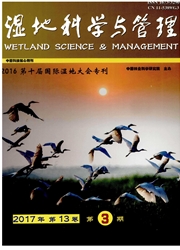

 中文摘要:
中文摘要:
互花米草Spartina alterniflora已成为我国海岸滩涂湿地生态系统最主要的入侵植物之一,对我国沿海湿地土壤生态系统产生了重大的影响。为进一步探究互花米草的入侵机理,选择滨海湿地土壤生态系统为切入点,拟从互花米草入侵我国滨海湿地对土壤生态系统物质循环(土壤有机碳、土壤氮和重金属)和土壤生物(底栖动物和土壤微生物)两方面的影响进行归纳总结,阐明互花米草入侵后土壤生态系统的变化过程,并重点对互花米草入侵后土壤有机碳的增减变化进行系统梳理,为互花米草的生态治理和湿地生态系统的保护与恢复提供参考。
 英文摘要:
英文摘要:
Spartina alterniflora, a perennial rhizomatous grass native to the Atlantic and Gulf coasts of North America, spreads rapidly in coastal salt marshes in China, and has caused considerable effects on the invaded regions. This paper summarizes recent studies about the influence of invasive S. alterniflora on soil ecosystems in coastal wetland areas, mainly from the aspects of soil biology(soil microbes and soil animals) and matter(soil organic carbon, soil nitrogen and heavy metals) cycles, and direction for future studies was discussed. Like other invasive species, it is quite difficult, expensive and even impossible to eradicate S. alterniflora once it has successfully invaded the coastal ecosystems. Obviously, further intentional introductions of S. alterniflora should be banned in China, and effective control measures should be urgently taken, to minimize the negative impacts of S. alterniflora on native ecosystems in China.
 同期刊论文项目
同期刊论文项目
 同项目期刊论文
同项目期刊论文
 期刊信息
期刊信息
